Natural Sugar Substitutes
In this guide to natural sugar substitutes, we’ll be reviewing alternatives to refined white sugar. The world of sugar can be confusing and there are a lot of questions to be answered. What exactly does “natural” mean? Does organic matter? What does “sugar-free” really mean? We’ll cover all these questions and more.
Not only are sugar substitutes confusing to begin with, but marketing makes it even trickier to determine what’s what. Today we’ll clear up some questions by going over the healthiest sugar substitutes you can use to replace refined sugar in your diet.
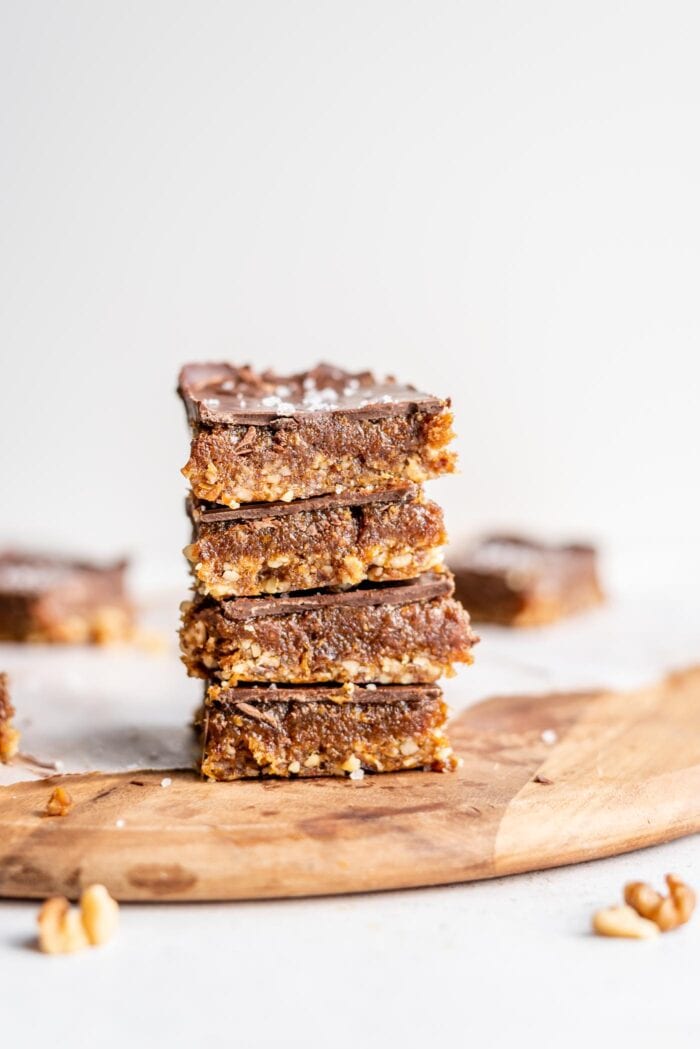
What’s the difference between refined and unrefined sugar?
The main difference between refined and unrefined sugar is that refined sugar has no nutritional value while unrefined sugar is less processed and retains sugars’ natural nutrients, such as calcium, iron, potassium and magnesium, albeit in trace amounts.
What is refined sugar?
Refined sugar has undergone extensive processing, stripping it of the molasses and any nutrients they may have contained. This includes white and brown sugar, and ingredients such as high-fructose corn syrup.
Refined sugars are more shelf-stable than unrefined sugars, as well as dissolve quicker and easier, so they’re more commonly found in packaged and processed foods.
What is unrefined sugar?
Unrefined sugars are less processed than refined sugars so they contain more nutrients. Unrefined sugar does not mean unprocessed.
Unrefined sugars and sweeteners include molasses, coconut sugar, agave and maple syrup, honey and date sugar. Some unrefined sugars and sweeteners have a lower glycemic response than refined sugar does.
Is unrefined sugar healthier?
Well, yes and no. It depends on what we’re talking about. As for sweetening, is a banana healthier than white sugar? I’m going to venture out here and say yes.
When it comes to refined versus unrefined sugar, such as coconut sugar, yes they contain vitamins and minerals that have been stripped from white sugar, but they are not a significant source of nutritional value, especially since they should still be used in moderation.
What’s the healthiest sugar substitute?
Refined or unrefined, sugar is still sugar but I do choose unrefined over refined sugar whenever I can.
The healthiest sugar substitutes are whole foods such as banana, applesauce, and dates.
Fruit comes along with fiber, antioxidants and plenty of vitamins and minerals that make the sugar content worthwhile. Its high fiber content means it has a lesser effect on blood sugar levels, keeps your fuller longer and is lower in calories than consuming refined sugar.
If whole, unprocessed fruit is not an option, the next best alternative is unrefined sweeteners such as date sugar, coconut sugar and maple syrup.
What are natural sugars?
Naturally occurring sugars are found in foods like fruits, as a mix of sucrose, glucose and fructose. All plant foods naturally contain some sugar.
What is added sugar?
Added sugars include any sugar or sweetener that is added to foods or drinks during processing to improve flavour, texture and shelf life.
This may include natural sugars such as white sugar or maple syrup or chemically manufactured sweeteners such as high fructose corn syrup.
How to Identify Added Sugars
By reducing the number of processed foods you eat you’ll automatically reduce the amount of hidden refined sugar you consume. You’d be surprised at what you’ll find sugar in, as it’s not always obvious by reading ingredient lists.
You may find added sugar in foods and drinks such as:
- regular soft drinks, energy drinks, Vitamin Water and sports drinks
- candy
- cakes
- cookies
- pies and cobblers
- sweet rolls, pastries, and donuts
- bread
- cereal
- fruity drinks
- ice cream and other frozen desserts
- yogurt
- sauces like BBQ sauce and pasta sauce
- ketchup
- pre-made soups
- flavored coffee
Names for Sugar on Food Labels
Sometimes added sugars can be hard to identify. If you see one of these ingredients listed on a food or beverage label, it’s simply an alternative name for what is essentially sugar.
- brown sugar
- confectioner’s powdered sugar
- corn syrup
- corn syrup solids
- high-fructose corn syrup (HFCS)
- honey
- invert sugar
- malt syrup
- fruit nectars (e.g., peach nectar, pear nectar)
- pancake syrup
- raw sugar
- sugar molecules: anhydrous or crystal dextrose, fructose, liquid fructose, glucose, lactose, maltose, sucrose
- sugar
- cane juice
- evaporated corn sweetener
- sugar cane juice
- maple syrup – unrefined
- molasses – unrefined
When reading the labels, check the grams of sugar listed in the nutrition facts. If you see a significant amount of sugar listed, have a look for these ingredients.
Artificial Sweeteners
In foods and drinks labeled “sugar-free” or “diet” you may find artificial sweeteners such as:
- saccharin
- acesulfame
- aspartame
- neotame
- sucralose
We will not be covering artificial sweeteners in this post as they are not considered a natural sugar substitute.
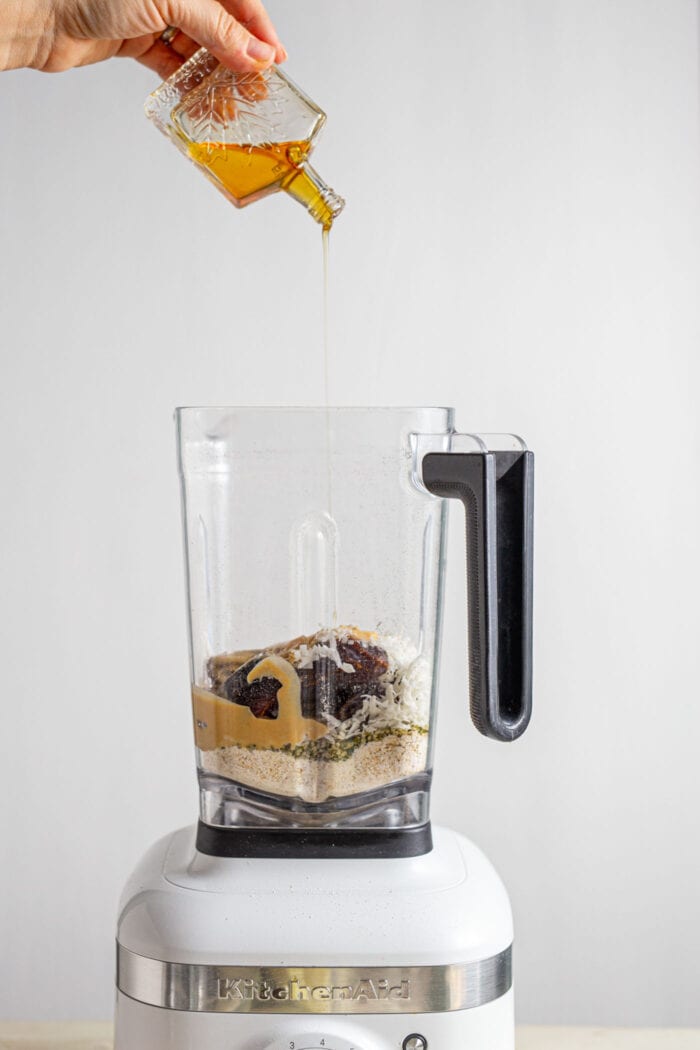
List of Sugar Substitutes
Below we’re going to be covering healthy sugar substitutes that work as alternatives to white refined sugar. My favorite, natural sugar substitutes are banana, dates, molasses, maple syrup, coconut sugar and stevia.
I don’t use sugar alcohols such as xylitol and erythritol very often but quite popular, especially with those following keto or low-carb diets.
Note that while these foods offer a somewhat better choice than refined sugar, sugar is still sugar, and they should still be enjoyed in moderation.
Here’s a recap of the sugar alternatives we’ll be covering:
- monk fruit – zero calories or carbs
- xylitol – a low-carb sugar alcohol
- erythritol – a low-carb sugar alcohol
- sorbitol – a low-carb sugar alcohol
- stevia – zero calories or carbs
- banana – whole food
- apples and applesauce – whole food
- sweet potato – whole food
- dates – whole food
- agave
- coconut syrup
- coconut palm sugar
- molasses
- brown rice syrup
- raw honey
- maple syrup
- coconut sugar
Monk Fruit
The health benefits of monk fruit have been well-known in traditional Chinese medicine for a few decades, but its use as a natural sweeter has finally become a little more mainstream.
Monk fruit extract is 150-250 times sweeter than table sugar and holds zero calories or carbs, making it popular for those following a low-carb or keto diet.
You might find that monk fruit sweetener pricier than other non-nutritive sweeteners. This is because of how challenging it is to grow, harvest and dry. Monk Fruit sweetener won’t be the most abundant choice at your local supermarket but definitely worth a try if you come by some at any point.
On top of being a great sugar alternative, its surprising possible health benefits include:
- anti-inflammatory properties known to relieve sore throats and reduce phlegm
- safe for diabetes because it doesn’t affect insulin sensitivity
- may help with weight loss
- may aid in eliminating fevers
- may help prevent allergies
How to use Monk Fruit
Monk fruit can be found in granulated and liquid form and is considered to be a sugar-free sweetener.
I recommend Lakanto for both. They even have sugar-free maple syrup and monk fruit chocolate chips!
Granulated monk fruit sweetener can be used at a 1:1 ratio to replace white or brown sugar in recipes. Liquid monk fruit is much like liquid stevia so you only need a few drops.
Monk fruit works well to sweeten everything from coffee to salad dressings and can easily be used in baking and other sweet treats.
Try monk fruit sugar in these sugar-free cinnamon sugar balls!
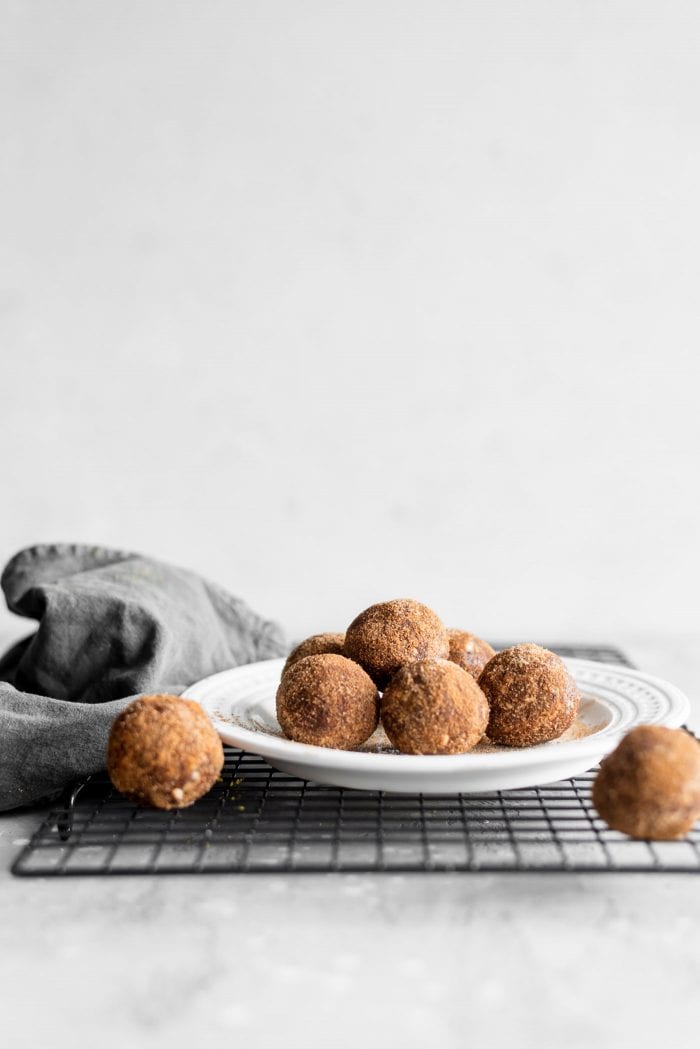
Xylitol
Xylitol is categorized as a sugar alcohol. It is found in small amounts in many fruits and vegetables and is therefore considered natural. Humans even produce small quantities of it via normal metabolism.
Xylitol has a similar sweetness as regular sugar but contains 40% fewer calories. Table sugar holds 4 calories per gram versus Xylitol the only holds 2.4 calories per gram.
On top of its low glycemic index, xylitol may reduce the chances of developing tooth decay, plaque build-up, ear and yeast infections. Most of the bacteria responsible for causing these health issues to feed off sugar. Using xylitol doesn’t give them the fuel they need to grow. Some dentists have even recommended patients to chew sugar-free gum to aid in decreasing the development of plaque or oral infections.
The main use of sugar alcohols is to sweeten coffees, teas and various recipes. You can replace sugar with xylitol in a 1:1 ratio. It is also a common ingredient in sugar-free chewing gums, candies, mints, diabetes-friendly foods and oral-care products.
Try using xylitol to replace table sugar in your next morning cup of coffee—see whether or not you find a difference!
Try xylitol in these skinny chocolate chip zucchini muffins.
Erythritol
Similar to xylitol, erythritol is also a sugar alcohol and works well as a sugar replacement.
In large-scale production, erythritol is created when a type of yeast ferments glucose from corn or wheat starch. It holds 70% of the sweetness of regular sugar but it won’t spike your blood glucose levels, making it a great alternative for diabetics.
When it comes to baking, erythritol is a soluble sugar that melts at high heat and does not caramelize. Without caramelization, baked goods can’t become chewy and dense, so treats made with erythritol tend to be on the drier side.
Erythritol is best used in recipes that are no-bake, raw or have other sweeteners added to them.
Sorbitol
Most sorbitol is made from potato starch, but it is also found naturally in berries like blackberries, raspberries and strawberries, and other fruits such as apples, apricots, avocados, cherries, peaches and plums.
Sorbitol also aids in oral health, just as xylitol does, by helping to decrease plaque and growth of cavities.
Unlike other sugar alcohols, sorbitol doesn’t have an aggressive aftertaste and leaves you with a cooling mouth sensation.
It is also a good substitute choice for baking as its moisture-stabilizing action helps maintain the freshness of baked goods that tend to become dry or harden. Sorbitol can withstand high temperatures and it combines well with other ingredients like gelling agents, fats and sugars.
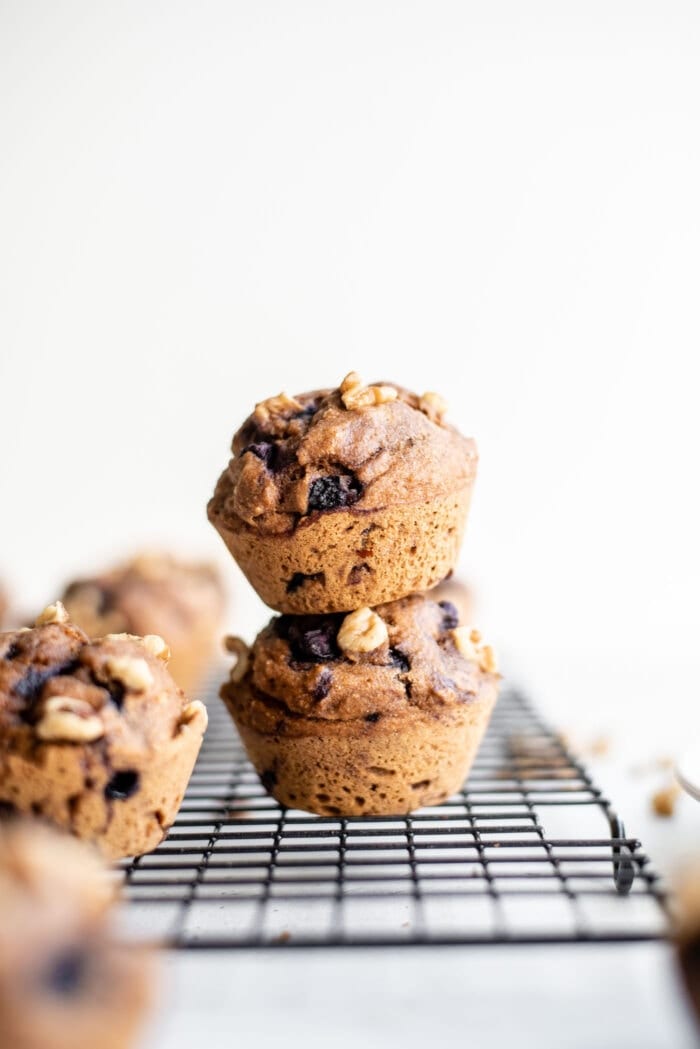
Coconut Syrup
Coconut syrup is a natural sweetener that comes from the sugary circulating fluid of the coconut plant. It’s great added to a smoothie or drizzled on your morning oatmeal or pancakes.
Coconut syrup is among the substitutes for regular table sugar that has a lower glycemic index thanks to a fiber called inulin. However, unlike xylitol, erythritol and sorbitol, its sugar and calorie content outweigh its health benefits.
Be mindful of checking all ingredients before purchasing as some commercial brands might add regular milk or cream and other high fructose syrups for its production.
Molasses
A classic swap for your everyday table sugar, molasses has solidified its place in baking and cooking. From cake frostings to ginger cookies, this slightly bitter but yet sweet drizzle is definitely at the top of the list when it comes to sugar alternatives.
Depending on the recipe, if you are to sub out an ingredient for molasses, be aware that every type varies in consistency, flavour and sugar content.
Other than baking, a few more ways to mix in molasses include:
- Drizzling it on oatmeal or yogurt
- Blending it into a smoothie
- Glazing roasted veggies
- Sweetening up sauces and homemade marinades
Try molasses in my raw gingerbread balls, no-bake chocolate gingerbread cookies or peanut butter gingerbread cookie.
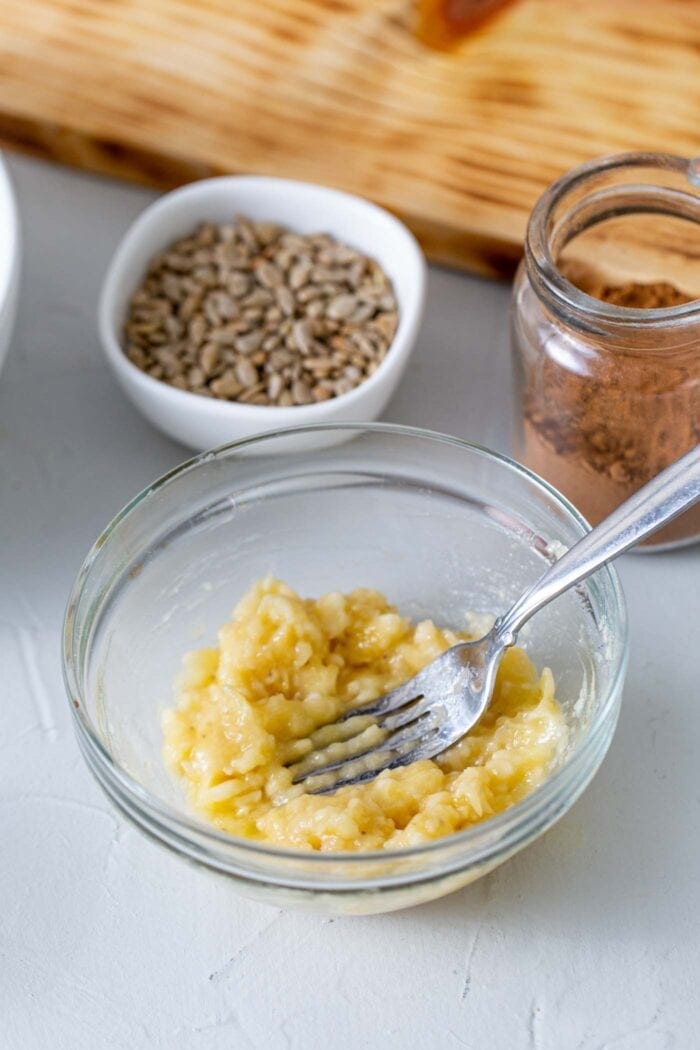
Banana
Bananas are often forgotten when it comes to choosing a natural sweetener. Their density can add a surprising taste and texture desserts and baked goods.
On top of their potassium and vitamin B6 content, bananas hold a ton of benefits that can improve digestive and heart health. When it comes to using bananas as a sweetener, the possibilities are endless. Just to name a few:
- Pre or post-training smoothies
- Oatmeal
- Pancakes and waffles
- Muffins
- Any and all baking (cakes, puddings, cupcakes, the works..)
Banana Recipes
- Vegan Banana Bread Recipe
- Flourless Peanut Butter Chocolate Chip Cookies
- Simple Banana Oatmeal
- Vegan Blueberry Muffins
- Healthy Banana Split
Apples and Applesauce
When it comes to baking, the underdog of sweeteners has to be awarded to applesauce. It works as a substitution for both oil and butter at a 1:1 ratio and adds sweetness at the same time.
Recipes substituted with applesauce might perform differently in the oven, so keep an eye on them during baking. You can expect your baked goods won’t brown as quickly and may easily overbake. Test your cake, bread or cookies with a knife a few minutes before the estimated finish time to ensure you get a perfect consistency.
Applesauce Recipes
- Vegan Oat Flour Brownies
- Slow Cooker Apple Butter (made with whole apples)
- 5-Ingredient Protein Brownies
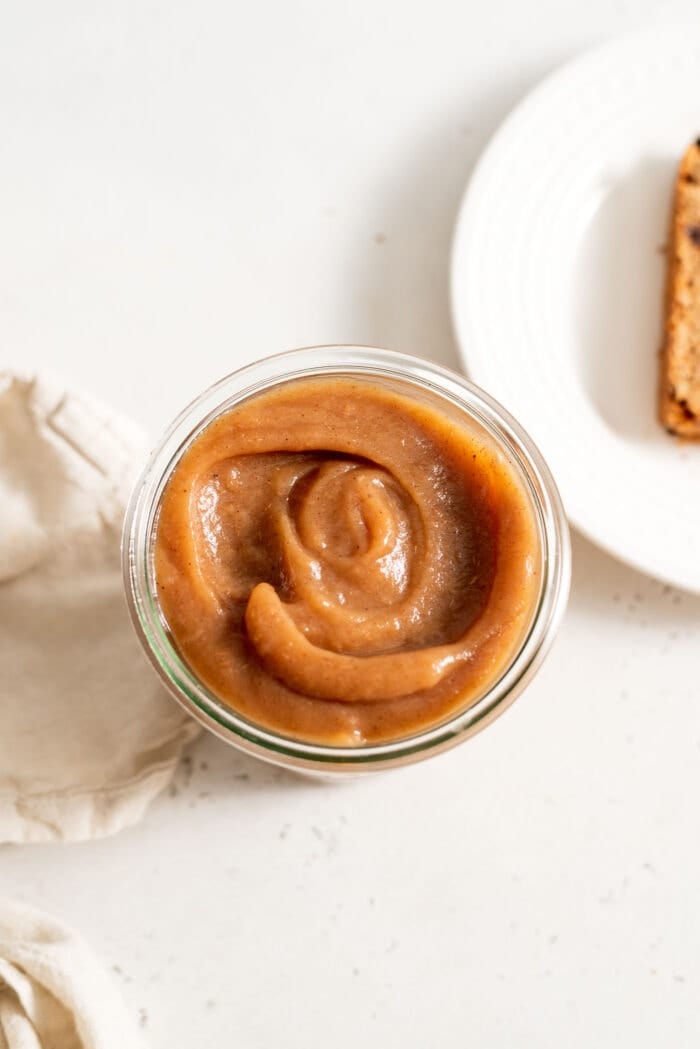
Sweet Potato
Sweet potato isn’t super sweet but can be used to replace some sugar in brownies, cakes and muffins and is wonderful in pancakes, oatmeal and smoothies. It also works well as a lower-sugar alternative to apple and banana.
Try my sweet potato smoothie and learn how to bake sweet potato here.
Brown Rice Syrup
Brown rice syrup makes a great replacement for honey as it’s very thick and sticky, much like honey is. It works well as a liquid sweetener for coffee, pancakes and oatmeal but can also be used in baking and other recipes.
It can be used in baking to replace sugar but you’ll have to make some adjustments to ingredient quantities and baking time to get things right. Typically you’ll need 1 1/4 cup brown rice syrup to replace 1 cup of sugar, and other liquids will need to be reduced by 1/4 cup to account for the added liquid.
It also works great for binding no-bake recipes, you can try it in these healthier cereal bars.
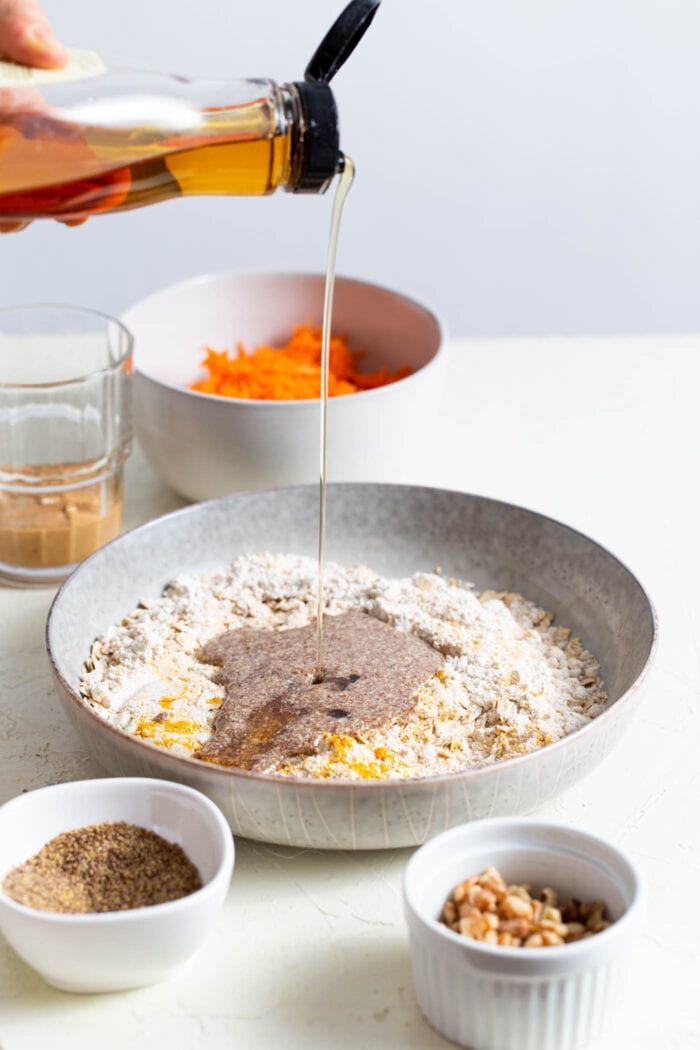
Agave Syrup
Agave syrup comes in different varieties. Its flavour is highly impacted by the extraction process, which can also determine what you’ll use it for. The lighter syrups offer more of a mild or neutral flavour whereas the amber or dark agave will give that caramel taste you’ll most often find in desserts.
Other than using it as an alternate sweeter in your favourite recipes, here are some other ways to try Agave syrup:
- Right out of the bottle on top of a stack of pancakes or waffles
- Natural sweetener for iced tea or your favourite hot drink
- In your pre-workout smoothie (hello electrolytes!)
On the nutrition side of things, agave syrup is quite similar to high-fructose corn syrup. Depending on how it is been processed, it can contain anywhere from 55 to 97 percent fructose.
If you know you’ve experienced an intolerance to fructose before, I would recommend opting out of choosing the blue agave since it consists of about 56% fructose. The amber and light varieties offer just as much sweetness to satisfy your sweet tooth.
In most cases, agave can be used at a 1:1 ratio to replace sweeteners like brown rice syrup, honey or maple syrup.
Raw Honey
A big reason why raw honey has gotten so popular, on top of its amazing taste, is the fact that it’s loaded with healing properties to help support your immunity.
Whether its soothing a tough cough or acting as a natural antibacterial and antimicrobial agent, you can bet you’ll be reaping its benefits no matter what recipe you incorporate it into.
You can add raw unpasteurized honey to:
- Pancakes
- Muffins
- Spread it on toast
- Mix it into oatmeal
- Make salad dressing
- Sweeten herbal teas
- Raw baking
Keep in mind honey is not vegan so if eating a cruelty-free diet, choose another sweetener on this list, such as maple syrup or brown rice syrup.
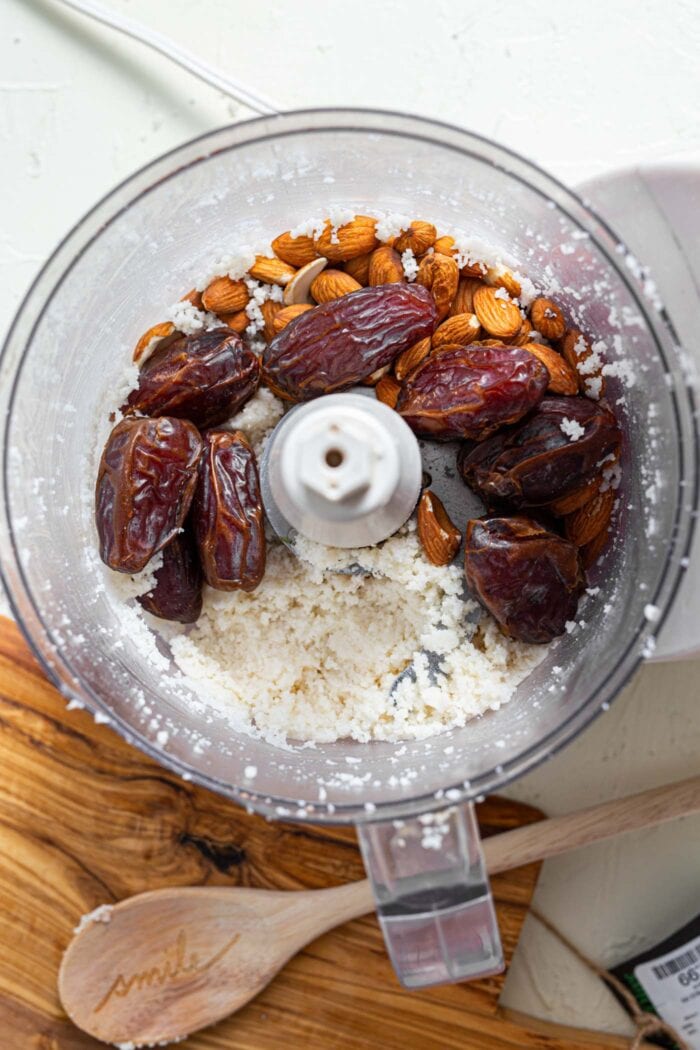
Dates
Dates are my favourite natural sweetener. They contain minerals, vitamins, and fiber and have a rich, caramel taste. You can add whole or chopped dates right into recipes or you can blend them with hot water and a pinch of sea salt to make a delicious caramel sauce or date paste.
My favourite kind of date is medjool but I also use sayer dates, deglet noor and honey dates. I can usually find those varieties locally but there are many other wonderful kinds of dates out there.
Health Benefits of Dates
- high in fiber which promotes heart and digestive health
- good source of potassium
- excellent source of copper, good for bone health
- source of manganese
- source of magnesium giving them anti-inflammatory and blood pressure benefits
- source of iron
- contain vitamin B6 which supports brain health
- may support a healthy pregnancy and delivery
- contain isoflavones that are known to reduce the risk of cardiovascular disease
- contain vitamin A, important for healthy vision
Those are just a few of the benefits of enjoying dates on a regular basis. The details aren’t important, just know that dates are one more whole food you can include in your toolbox for healthy living.
If you have a sweet tooth, a couple of dates is a great way to get a sweet fix without the need for refined sugars. I also love dates as a quick pre-workout snack when I need a little boost of natural energy.
How to Use Dates for Sweetening
- make date paste
- make caramel sauce
- make or purchase date sugar
- chop and add to baking, oatmeal and more
- use whole dates in blended recipes like smoothies, coffee, hot chocolate and homemade almond milks and coffee creamers
- as a base for no-bake vegan desserts
Date Recipes
- Vegan Tahini Date Cookies
- Pecan Pie Energy Bites
- No-Bake Superfood Cookies
- Chocolate Chip No-Bake Granola Bars
- Raw Vegan Maple Pecan Pie
- No-Bake Chocolate Caramel Bars
- No-Bake Chocolate Caramel Tarts
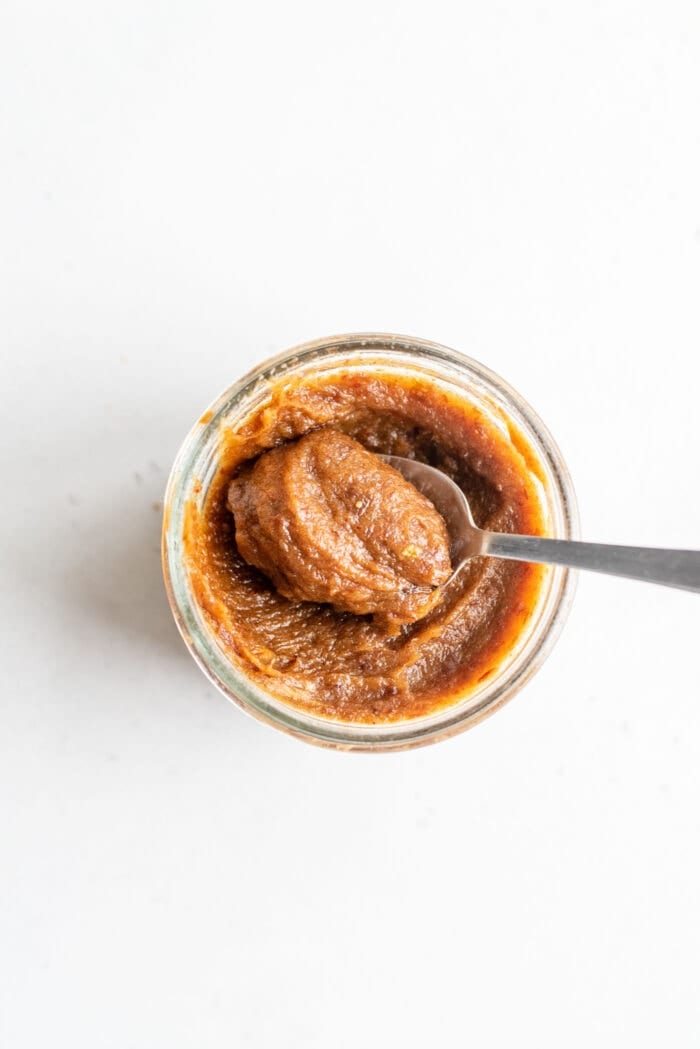
Maple Syrup
Maple syrup is my favorite natural liquid sweetener. It contains vitamins and minerals and I love the flavor it adds to recipes. I use it in everything from salad dressings and sauces, to curries, to homemade chocolate, to pancakes and of course in all varieties of yummy desserts.
Maple Syrup Recipes
- Tahini Hemp Seed Bars
- Vegan Chia Seed Pancakes
- Tahini Maple Dressing
- Maple Roasted Brussel Sprouts
- Maple Pecan Pie
- Vegan Chocolate Peanut Butter Cups
Coconut Sugar
Coconut sugar is a low-glycemic natural sweetener you can use at a 1:1 ratio to white or brown to replace sugar in recipes. It has a delicious, caramel flavour and works well in baking, raw energy bars, in coffee or anywhere else you would use sugar.
Coconut sugar is my go-to dry sweetener for baking that calls for a granulated sweetener.
This underrated sugar alternative also holds quite a few key nutrients for a healthy diet including iron, zinc, calcium and potassium, along with some short-chain fatty acids like polyphenols and antioxidants.
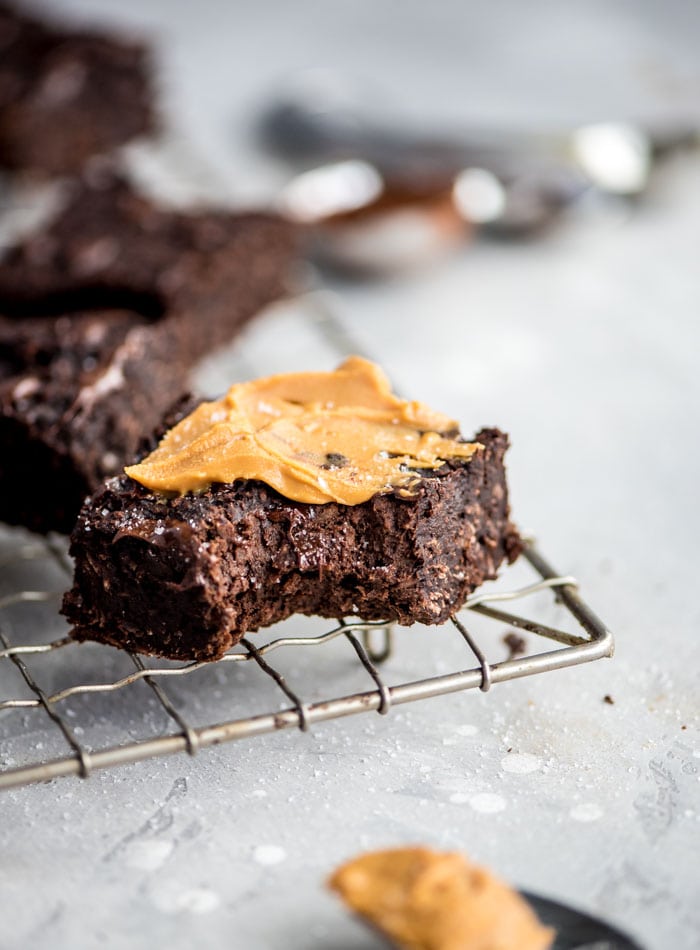
Stevia
Stevia leaf is a good option if you need to keep your recipes low-carb and sugar-free. Stevia is a zero-calorie sweetener. I like to use organic liquid stevia drops to sweeten things like pancake batter, baking, oats, drinks and other dishes where I just want a hint of sweetness.
You can use stevia as a sugar-free replacement for sugar in most recipes, unless sugar is playing a roll in structure, like in cakes and other baked desserts.
I use stevia most often in pancakes, puddings, sugar-free baking and blended drinks such as matcha and “bulletproof” coffee.
“Raw” Sugars
There are also slightly less processed alternatives to processed white and brown sugar, such as demerara, raw cane sugar, sucanut and turbinado.
Just like white sugar, all of these sugar varieties are composed of sucrose and have nearly the same effect on blood sugar as white sugar does. They may be slightly healthier options but should still be used sparingly.
One benefit to these sugar varieties is that they tend to be more flavourful than table sugar, so you may need less to achieve your desired sweetness.
- Turbinado. Turbinado sugar is actually quite highly processed and isn’t much different than regular sugar. It’s been stripped of vitamins, minerals, and other trace elements.
- Sucanut. Sucunat is less processed than white sugar so it contains some trace amounts of nutrients such as iron, calcium, and potassium. The granules are tan in color and have a delicious molasses flavor.
- Demerara. Demerara sugar is made from sugarcane and consists of larger grains than regular white or brown sugar. It naturally contains molasses, so it’s brown in color and has a nice, caramel flavor.
This list also includes raw cane sugar, rapadura sugar and muscovado sugar. All of these sugars are produced through various sugarcane processing methods so the final products are all very similar.
Any of them can be used as direct substitutes for white and brown sugar in baking and other recipes but keep in mind that just like white refined sugar, all of them have 15 calories per teaspoon and are not a significant source of nutrients.
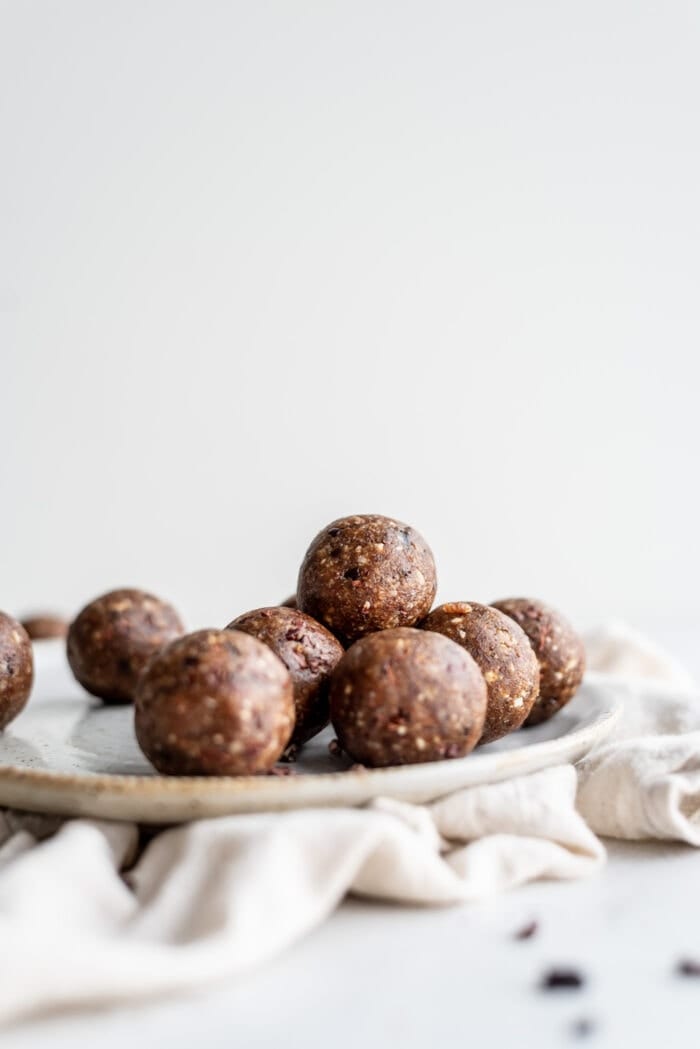
Whole Food Dessert Ideas
Here are some delicious ways to satisfy your sweet tooth without going overboard on sugar:
- dark chocolate – try it topped with nut butter
- homemade hot chocolate
- dates stuffed with nut butter – try them sprinkled with cacao nibs and sea salt!
- frozen grapes
- berries
- fresh or frozen cherries
- banana nice cream
- tahini cacao fudge balls
- tahini date cookies
- flourless peanut butter banana cookies
- no-bake superfood cookies
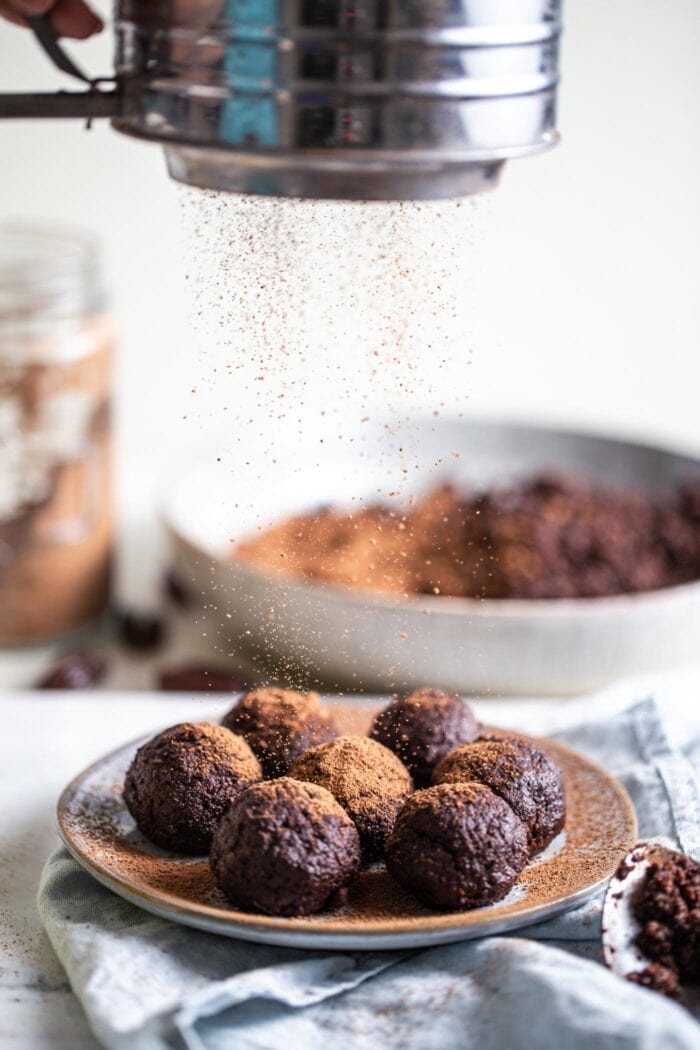
Sugar FAQ
Now that we’ve covered natural sugar substitutes you can use to start replacing table sugar in your diet, let’s review some commonly asked questions and concerns.
How much sugar should I eat?
According to the American Heart Association guidelines:
- Men should consume no more than 38 grams, or 9 tsp of sugar per day.
- Women should consume no more than 25 grams, or 6 tsp of sugar per day.
According to the World Health Organization, only 6-10 percent of your daily calories should come from sugar. This works out to 120-200 calories per day or 30-50 grams for a 2000 calorie diet.
If you keep processed foods to a minimum, these numbers are easy. As soon as you start filling your diet with processed foods, you will be shocked at how quickly added sugars add up.
Luckily, with awareness and some whole food swaps, it’s quite easy to consume less sugar while still enjoying the occasional sweet treat.
How can I stop sugar cravings?
Honestly? Stop eating so much refined sugar. Sugar should be a once in a while treat. The more you eat, the more you crave, and so begins the vicious cycle.
That being said, dieting and restriction can also contribute to cravings and even binging, so do allow yourself treats when the time is right.
On a daily basis though, reduce the amount of sugar you eat and load up on veggies, some fruits, healthy fats like nuts, seeds and avocado, stick to whole, unrefined grains, hydrate well, sleep enough, manage stress and watch your sugar cravings disappear.
Reducing cravings is all about keeping your blood sugar and hormones levels stable, and both diet and lifestyle play an important roll in doing so.
You can read more about this in these posts:
What’s the difference between glucose, sucrose and fructose?
These three sugars may taste the same but they all have different effects on the body. Glucose can be metabolized by every cell in the body and is a primary source of energy.
Fructose is mainly metabolized in the liver. Numerous studies have shown the harmful effects of high-fructose intake including insulin resistance and diabetes.
Sucrose is the most common type of sugar and is a naturally occurring carbohydrate found in fruit and other plant foods. It is added to all types of processed foods including cereal, ketchup, soda, candy, chocolate and even processed meats.
What is high-fructose corn syrup?
In one word, yuck. High-fructose corn syrup or HFCS is a commonly used sweetener produced from corn starch and used in processed foods such as breads, soda, cookies, candy, cereal, granola bars, crackers and more. It consists of both fructose and glucose.
What does sugar-free mean?
All plant foods contain natural sugars so what does sugar-free really mean? Well, sugar-free may be defined differently by different people. To me, it means, no added sugar and especially no refined sugar.
Under my definition, fruit, vegetables, whole grains, and other whole plant foods are all included in a sugar-free diet. If I use dates, apples or banana to sweeten a recipe, with no other added sugar, I consider that sugar-free. So, I consider any whole food to be sugar-free, even though they do technically contain sugar.
Refined sugar-free means, the recipe contains unrefined sweeteners such as maple syrup or coconut sugar but is not completely sugar-free.
What doesn’t sugar-free mean?
You’ve probably seen a few packaged goods at your local grocery store labeled “no sugar added” or “sugar-free” and while the advertising limited sugar content might seem like the appealing choice, they both don’t mean the same thing.
When it comes to “sugar-free” products, technically it doesn’t have to be completely free of sugar, as long as it meets the per-serving requirement. The FDA standard for “sugar-free” foods says it can’t exceed a content of 0.5g per serving. So if you were to use multiple servings, it’ll add up quite quickly.
Note that sugar-free foods may still contain artificial sweeteners or natural calorie sweeteners such as monk fruit or stevia.
Is sugar vegan?
You might be surprised to learn that not all sugar is vegan. Do you know how regular table sugar gets its powdery-white look? Although it doesn’t contain it, almost 100% of regular sugar gets processed through bone char. Yep, you read that right.
When strolling down the baking aisle, you might not be able to pick out which ones are vegan right off the bat. Here are a few keywords to look out for that can guarantee it’ll be vegan: raw, organic, unrefined and natural.
What’s the best natural sweetener for coffee?
You might be surprised by a few of these… When it comes to its bitterness and flavourful aromas, pairing your morning cup of joe with something that compliments its undertones is a must. If stevia isn’t your jam, give the following a try and see what combination your tastebuds prefer:
- Cinnamon
- Unsweetened Raw Cacao Powder
- Raw Honey
- Maple Syrup
- Coconut Cream (unpasteurized from a can)
- Organic Vanilla Extract
- Stevia
Is sugar in fruit bad for you?
The sugar in fruit comes in a package with vitamins, minerals and fiber and that far outweighs any negative affects the sugar would have. Fruits are a wonderful, nutrient-dense food to include in your diet.
If you’re eating a low-sugar diet, reach for whole fruits over dried and choose low-GI fruits like blueberries, strawberries and apples. You can read more about this in my macro guide.
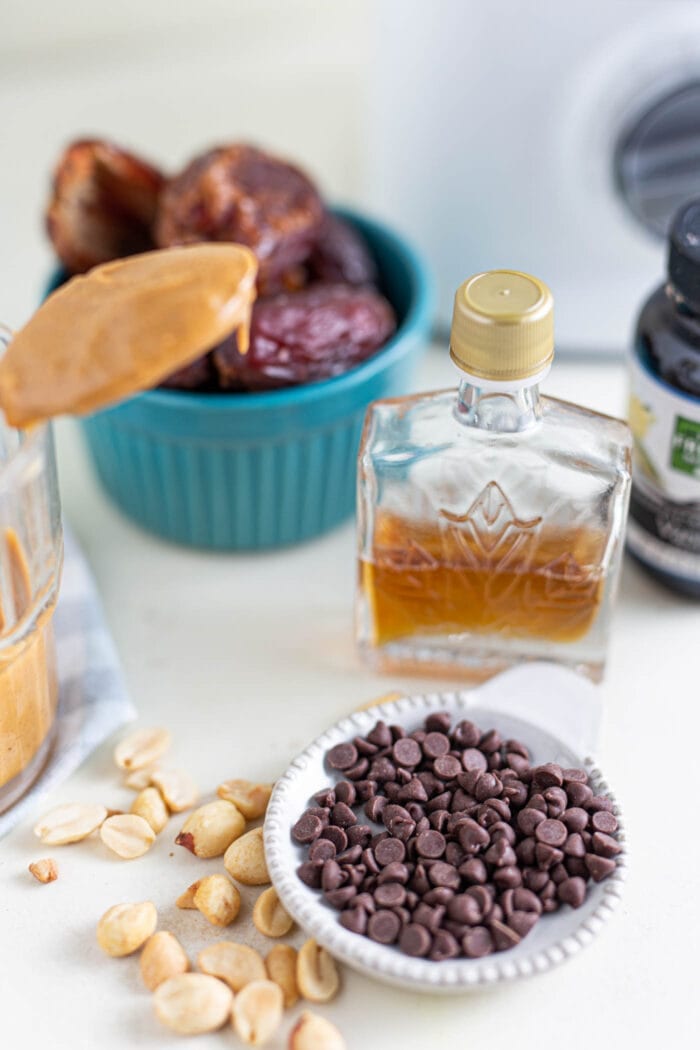
Conclusion
Sugar is sugar. No matter if it’s fructose, sucrose or glucose contents, if you consume too much of it, your body will start to notice. While there are some alternatives that offer more health benefits than others, just like anything else you might eat throughout the day, take everything in moderation.
If you’re a regular sugar user, challenge yourself to make the swap for a few healthier options and see whether you notice a difference in taste, chances are, you probably won’t. Nature has so many hidden natural sweeteners that can satisfy any craving from one sweet tooth to the next.
Between reducing the amount of sugar in your diet and choosing alternatives to refined sugar whenever possible, you may find you have more energy, sleep better, improve digestion and have fewer cravings so why not make the switch today!

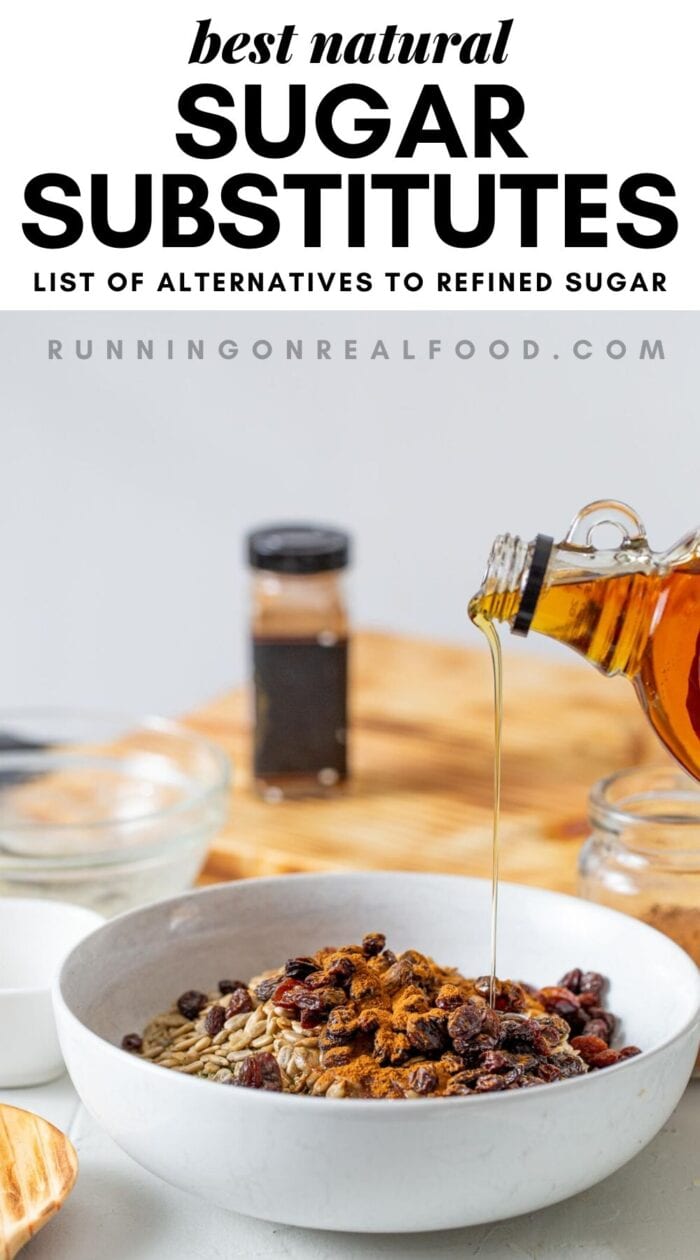
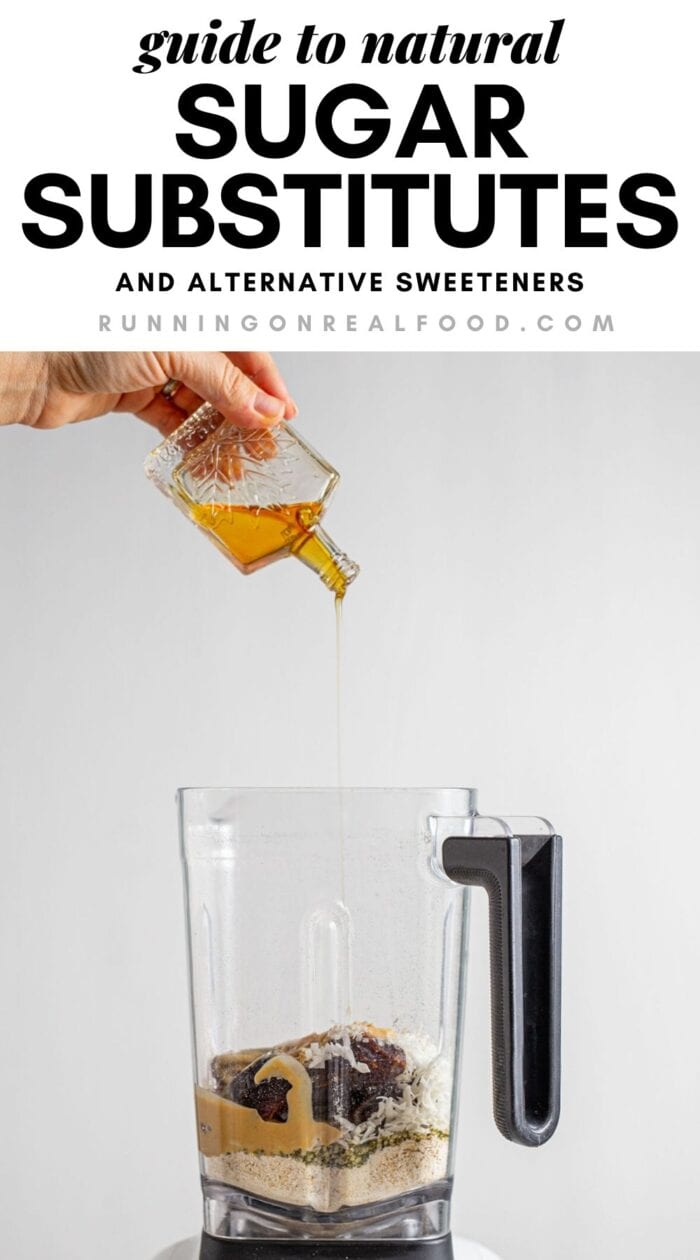

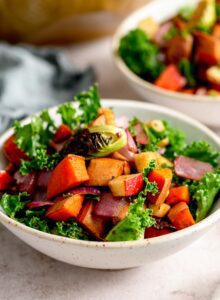
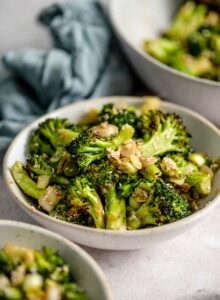
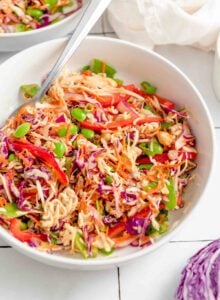
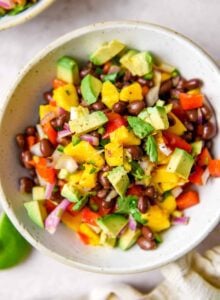
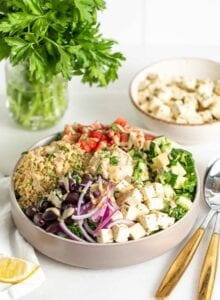
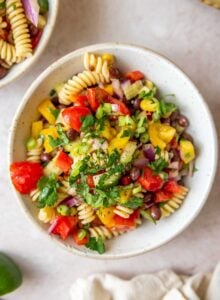
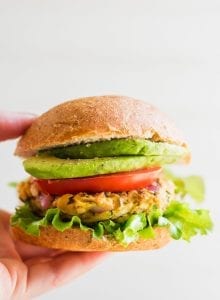
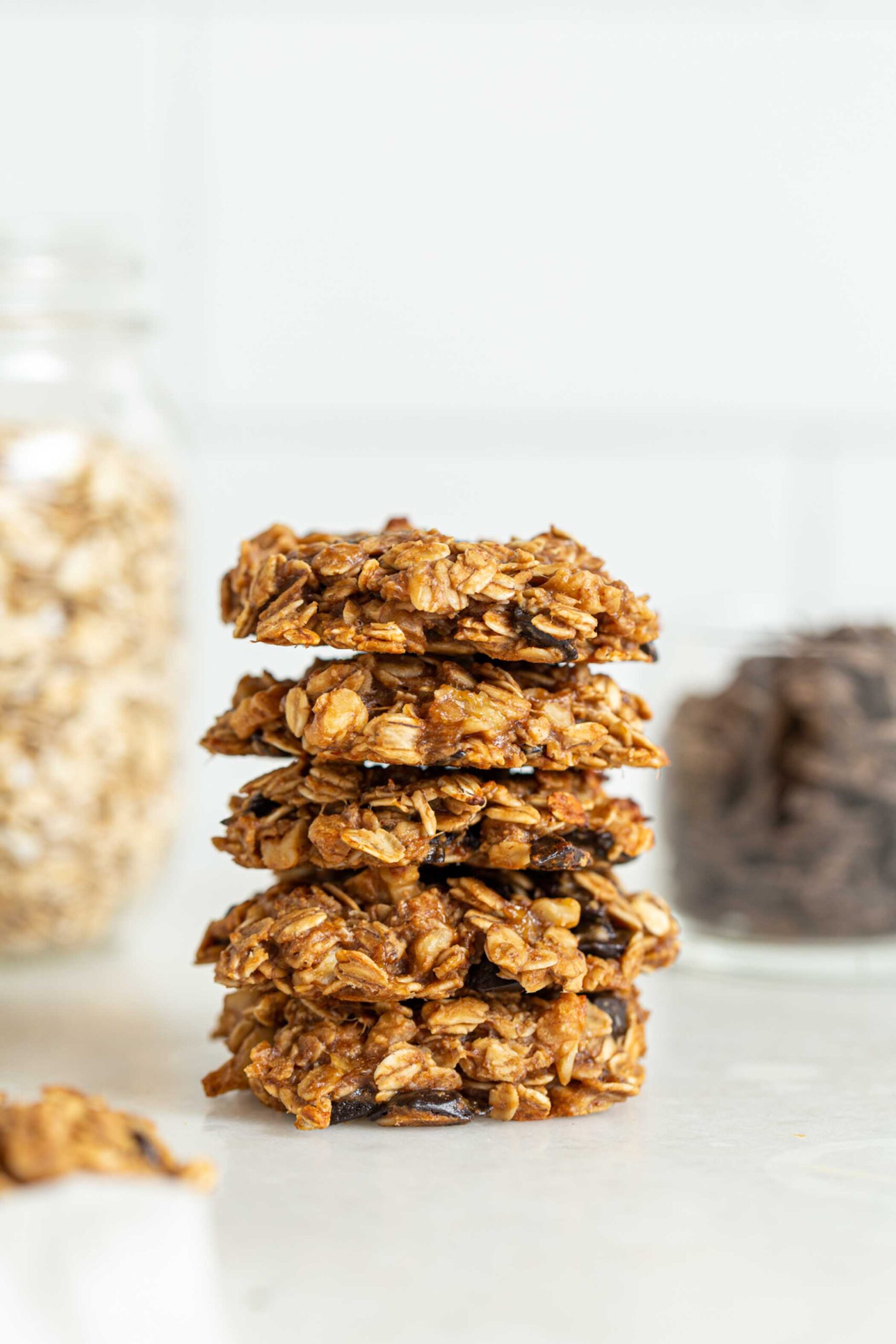
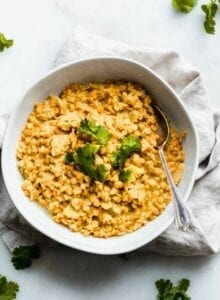
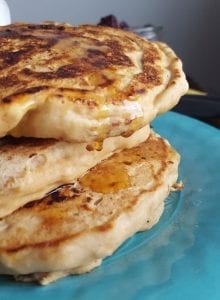
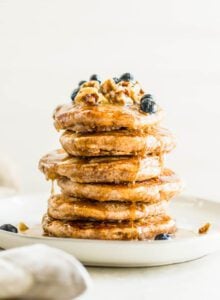

Thank you for this post. I noticed you use dates in some recipe. Is there a brand that you recommend to buy in bulk?
I always get a brand called Parnoosh, which are sayers dates. They’re not bulk but they come pitted in a decent size box and they’re nice and soft making them perfect for recipes.